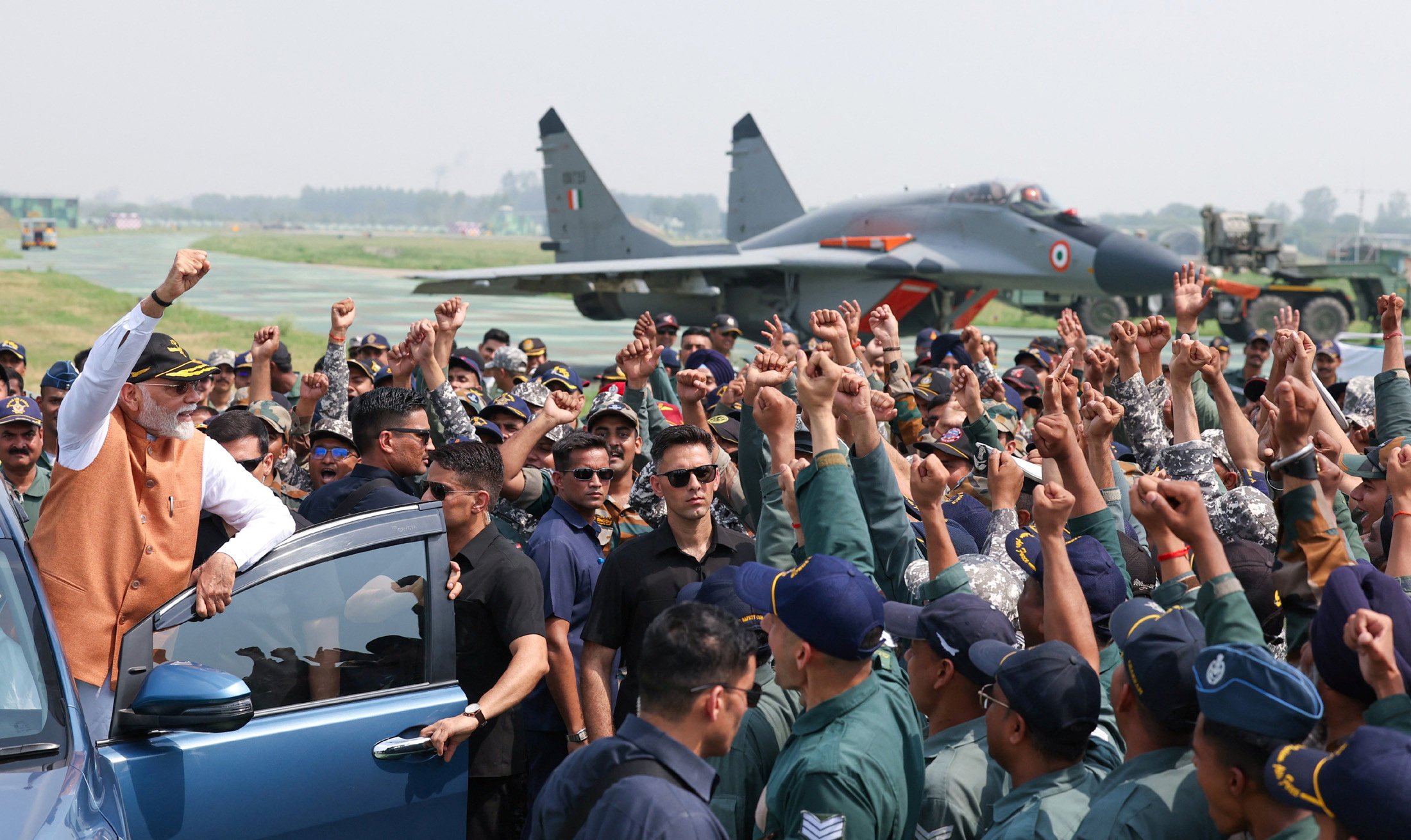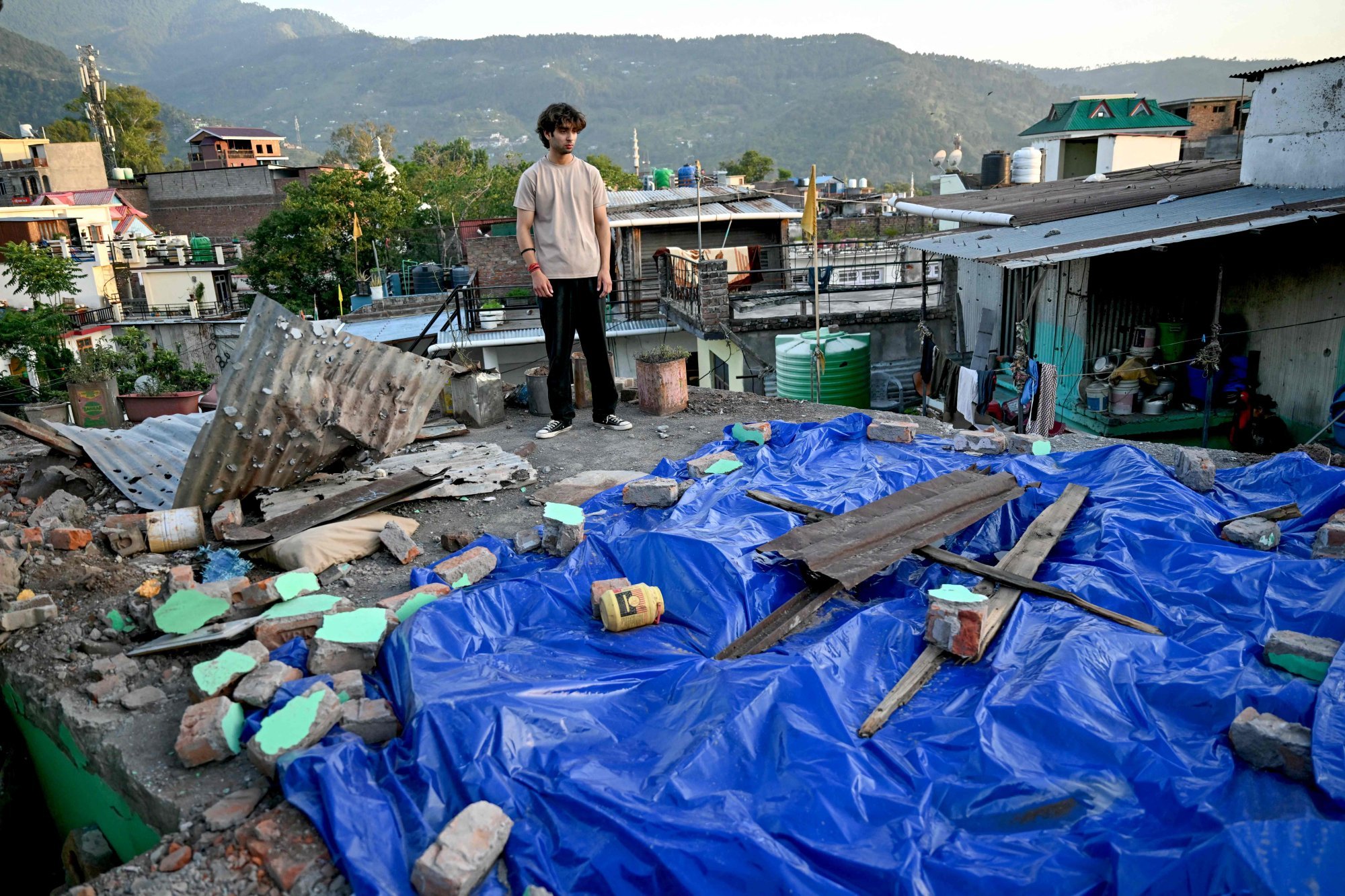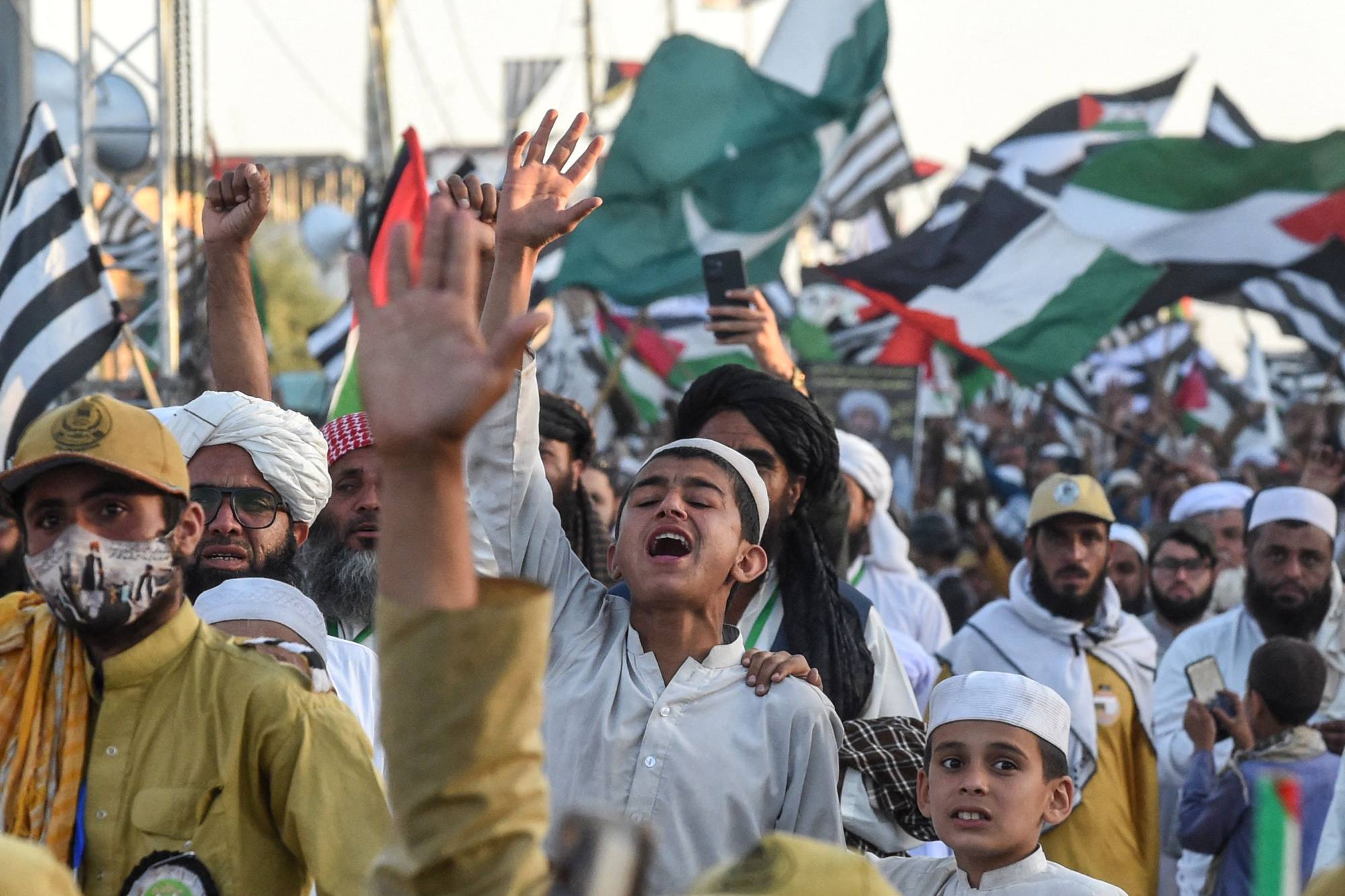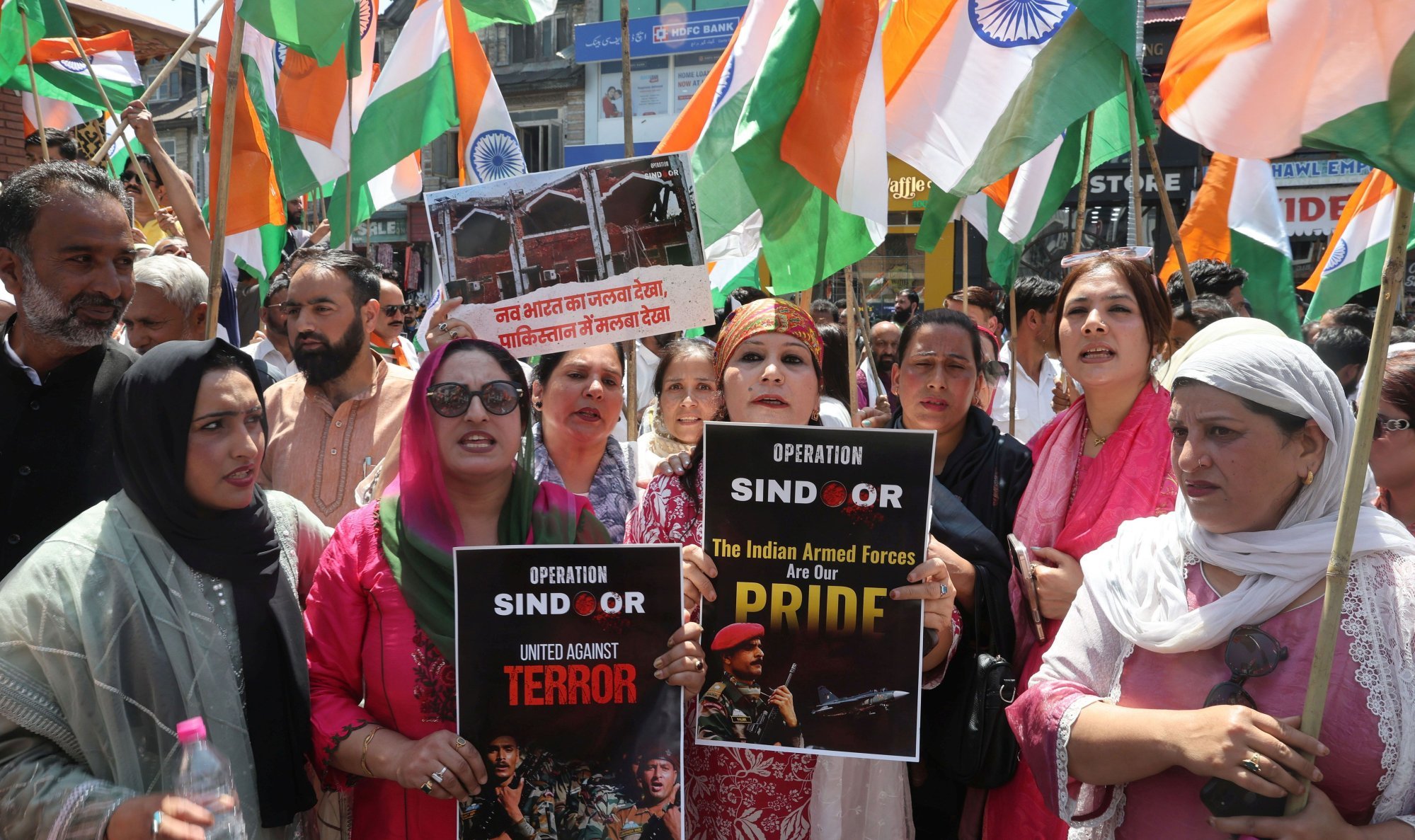Misinformation warfare intensifies in India and Pakistan as conflict rages on
Fake content on the clash between India and Pakistan may deepen social polarisation and erode trust in reliable sources, analysts warn

As global attention remains fixated on the military hardware wielded by India and Pakistan in their ongoing conflict, a different type of warfare has been waged in the two countries on the media front.
Observers say the clash has been amplified by falsehoods from major news outlets and elsewhere from both sides, which threaten to “erode democratic norms and increase polarisation” across the subcontinent.
India’s strikes on Pakistan and Pakistan-administered Kashmir last week have unleashed a wave of misinformation online, with unrelated videos claiming to be from the attacks gaining millions of views.
The strikes were aimed at targeting what India calls terrorist camps in Pakistan, two weeks after a deadly attack on India-administered Kashmir. New Delhi blames Islamabad for the April 22 attack near the tourist town of Pahalgam, which caused 26 deaths. Islamabad has rejected its rival’s claim.
After the first round of Indian air strikes began, footage of a 2023 Israeli air strike in Gaza quickly appeared on television and social media, which was attributed to the Indian strikes.
A video claiming to show an explosion caused by a Pakistani counter-attack was found to be from an explosion at the main port of the Lebanese capital of Beirut in 2020.
Another video claiming to show the impact on the ground in Pakistan following an Indian attack shows adults and children covered in dust as they run for safety. However, viewers have pointed out that the people in the video are speaking Arabic, which is not commonly spoken in Pakistan.

An online post has claimed that several French-made Rafale fighters, used by the Indian air force, were shot down during a strike on Pakistan, near Bahawalpur. However, a picture in the post shows a French-made Mirage 5 and not a Rafale fighter, with media outlets later revealing that the wreck shown in the post was of a plane on a training mission in Punjab in southeastern Pakistan last month.
Artificial intelligence-generated imagery also shows an army general in Pakistan saying the country has lost two of its aircraft. The clip, however, was later revealed to be an alteration of a segment from a press conference last year.
Likewise, another video purportedly showing a Pakistan shooting down an Indian fighter jet was exposed as fake after users pointed out that the clip was taken from a video game.
Sumitra Badrinathan, an assistant political science professor at the Washington-DC American University, said significant misinformation about the long-standing rivalry between India and Pakistan used to originate from anonymous online accounts. But during the two countries’ ongoing conflict, falsehoods – at least on the Indian side – had been put out by “previously credible journalists and major media outlets”, she added.
“Events that never happened are being broadcast on prime-time television and amplified by big-name journalists on Twitter – that’s dangerous. Television is still the most common source of news for Indians, so when trusted sources become disinformation outlets, it is a huge problem,” Badrinathan said.
For instance, several mainstream Indian media outlets have shown images of a naval vessel with flames in the background to suggest that the Indian navy had captured the Port of Karachi. The incident did not happen but the story went viral on social media after a journalist tweeted it on the X social media platform.
Mainstream media outlets have also run a video of a Pakistani air attack being foiled by an Indian air defence system in Jaisalmer, India. However, subsequent fact-checking revealed that the video was first uploaded in 2021 on a YouTube channel with a caption referring to the Iron Dome, Israel’s air defence system, in action.
Noting that such misinformation could heighten tensions, Badrinathan said it was likely that people who already felt strong nationalistic sentiments were the ones “most drawn to this content in the first place”.
“People who bought into these falsehoods were predisposed to believe them to begin with,” she said, adding that believing misinformation could “erode democratic norms and increase polarisation”.
One aspect that stood out during the misinformation warfare following last week’s clashes was the volume of fact-checking, especially in the later stages of the conflict, Badrinathan said.

Media outlets like Alt News and journalists like Mohammed Zubair did “incredible work” to debunk falsehoods while government social media accounts also did the same, she added.
Fact-checking by online users had also been helpful in correcting people’s misconceptions, Badrinathan said. “Anecdotally, I saw people change their minds after seeing these debunks, even when the original misinformation aligned with their beliefs,” she added.
The problem, however, persists as there is far more misinformation than such corrections online, according to Badrinathan.
“Going forward, we would need to boost our capacity to debunk in real time, whether its more support for fact-checkers or better public education around norms about sharing falsehoods,” she said.
Tal Hagin, a researcher for FakeReporter, an online watchdog established by researchers, activists and digital experts, said that waves of false reports, AI-generated content, and out-of-context images were a “staple” of any crisis, especially between nations embroiled in a conflict.

“The spread of disinformation and intentionally sharing fake news is a core principle of how nationalists retain the narrative they are trying to shape, even in a reality that opposes it,” Hagin said.
Spreading misinformation could only achieve “very short-term success and will almost always result in long-term ramifications” including further erosion of trust in traditional media, independent journalists and government spokespersons, he added.
“How is one to trust anything when a news programme, without any hesitation, declares they [Indian and Pakistani forces] have destroyed the enemy’s capabilities, only to later be met with a sobering reality where this didn’t occur?” he said.
“It is imperative that we, as citizens, demand responsible reporting, especially during a crisis.”